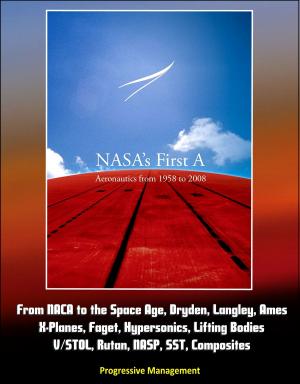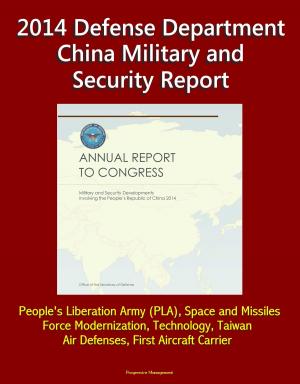21st Century Geothermal Energy: A History of Geothermal Energy Research and Development in the United States - Volume 2 - Drilling 1976-2006
Nonfiction, Science & Nature, Science, Earth Sciences, Chemistry| Author: | Progressive Management | ISBN: | 9781465842077 |
| Publisher: | Progressive Management | Publication: | March 5, 2012 |
| Imprint: | Smashwords Edition | Language: | English |
| Author: | Progressive Management |
| ISBN: | 9781465842077 |
| Publisher: | Progressive Management |
| Publication: | March 5, 2012 |
| Imprint: | Smashwords Edition |
| Language: | English |
In 2010, the Department of Energy (DOE) Geothermal Technologies Program (GTP) published a series of four history reports on Geothermal Energy Research and Development in the United States. The reports highlight the history and significant accomplishments of major research programs and projects in geothermal energy exploration, drilling, reservoir engineering and energy conversion in the United States from 1976-2006. Volume 2, converted for accurate flowing-text ebook format reproduction, covers drilling programs.
This report is one of a series issued by the U.S. Department of Energy (the Department) to document the many and varied accomplishments stemming from the government's sponsorship of geothermal research since 1976. The report represents a history of the major research programs and projects that have had a lasting impact on the use of geothermal energy in the United States and those that promise to have an impact. We have not attempted to write the definitive history of the Geothermal Technologies Program and the $1.3 billion that were expended through 2006 on geothermal research. Rather, we have brought together the collective memories of those who participated in the program to highlight advances that the participants deem worthy of special recognition.
In particular, this report examines the work done in one key area of geothermal technology development: drilling. Companion reports cover work in other areas, including Energy Conversion, Exploration, and Reservoir Engineering. The history focuses on the period from 1976 to 2006 when the Department was the lead agency for geothermal technology research as mandated by the Geothermal Research, Development and Demonstration Act of 1974. The earlier groundbreaking work by precursor agencies, such as the National Science Foundation, Atomic Energy Commission, U.S. Geological Survey, and the Energy Research and Development Administration, is cited as appropriate but is by no means complete.
Contents: Rock Penetration * Additional Drilling Tools * Logging and Instrumentation * Drilling Fluids and Wellbore Integrity * Slimhole Drilling * Systems Analysis * Analytical Studies * Geothermal Drilling Organization * Scientific Drilling Management * National Advanced Drilling and Excavation Technologies Program
Geothermal energy is a domestic energy source. Clearly, geothermal energy can greatly contribute to the nation's energy mix. It is clean and available 24 hours a day. The United States has an estimated 2800 MW of geothermal installed capacity; worldwide, the figure is 8000 MW. The U.S. Geological Survey estimated in 1979 that the hydrothermal geothermal power potential in the United States was approximately 23,000 MW. In addition, thousands of installations are using geothermal energy for agriculture, aquaculture, district heating and cooling, and other direct uses. This estimate of geothermal potential could be even higher. Using geothermal energy reduces our dependence on imported fuels, creates jobs in the United States, and more favorably balances the U.S. global trading position. Geothermal energy has environmental benefits. Electricity produced from geothermal resources in the United States prevents the emission of 22 million tons of carbon dioxide, 200,000 tons of sulfur dioxide, 80,000 tons of nitrogen oxides, and 110,000 tons of particulate matter every year compared to conventional coal-fired power plants. A geothermal binary power plant, operating with a closed system, emits virtually nothing to the atmosphere. Technologies have been developed to recycle minerals contained in geothermal fluid so that little or no disposal or emissions occur.
In 2010, the Department of Energy (DOE) Geothermal Technologies Program (GTP) published a series of four history reports on Geothermal Energy Research and Development in the United States. The reports highlight the history and significant accomplishments of major research programs and projects in geothermal energy exploration, drilling, reservoir engineering and energy conversion in the United States from 1976-2006. Volume 2, converted for accurate flowing-text ebook format reproduction, covers drilling programs.
This report is one of a series issued by the U.S. Department of Energy (the Department) to document the many and varied accomplishments stemming from the government's sponsorship of geothermal research since 1976. The report represents a history of the major research programs and projects that have had a lasting impact on the use of geothermal energy in the United States and those that promise to have an impact. We have not attempted to write the definitive history of the Geothermal Technologies Program and the $1.3 billion that were expended through 2006 on geothermal research. Rather, we have brought together the collective memories of those who participated in the program to highlight advances that the participants deem worthy of special recognition.
In particular, this report examines the work done in one key area of geothermal technology development: drilling. Companion reports cover work in other areas, including Energy Conversion, Exploration, and Reservoir Engineering. The history focuses on the period from 1976 to 2006 when the Department was the lead agency for geothermal technology research as mandated by the Geothermal Research, Development and Demonstration Act of 1974. The earlier groundbreaking work by precursor agencies, such as the National Science Foundation, Atomic Energy Commission, U.S. Geological Survey, and the Energy Research and Development Administration, is cited as appropriate but is by no means complete.
Contents: Rock Penetration * Additional Drilling Tools * Logging and Instrumentation * Drilling Fluids and Wellbore Integrity * Slimhole Drilling * Systems Analysis * Analytical Studies * Geothermal Drilling Organization * Scientific Drilling Management * National Advanced Drilling and Excavation Technologies Program
Geothermal energy is a domestic energy source. Clearly, geothermal energy can greatly contribute to the nation's energy mix. It is clean and available 24 hours a day. The United States has an estimated 2800 MW of geothermal installed capacity; worldwide, the figure is 8000 MW. The U.S. Geological Survey estimated in 1979 that the hydrothermal geothermal power potential in the United States was approximately 23,000 MW. In addition, thousands of installations are using geothermal energy for agriculture, aquaculture, district heating and cooling, and other direct uses. This estimate of geothermal potential could be even higher. Using geothermal energy reduces our dependence on imported fuels, creates jobs in the United States, and more favorably balances the U.S. global trading position. Geothermal energy has environmental benefits. Electricity produced from geothermal resources in the United States prevents the emission of 22 million tons of carbon dioxide, 200,000 tons of sulfur dioxide, 80,000 tons of nitrogen oxides, and 110,000 tons of particulate matter every year compared to conventional coal-fired power plants. A geothermal binary power plant, operating with a closed system, emits virtually nothing to the atmosphere. Technologies have been developed to recycle minerals contained in geothermal fluid so that little or no disposal or emissions occur.















